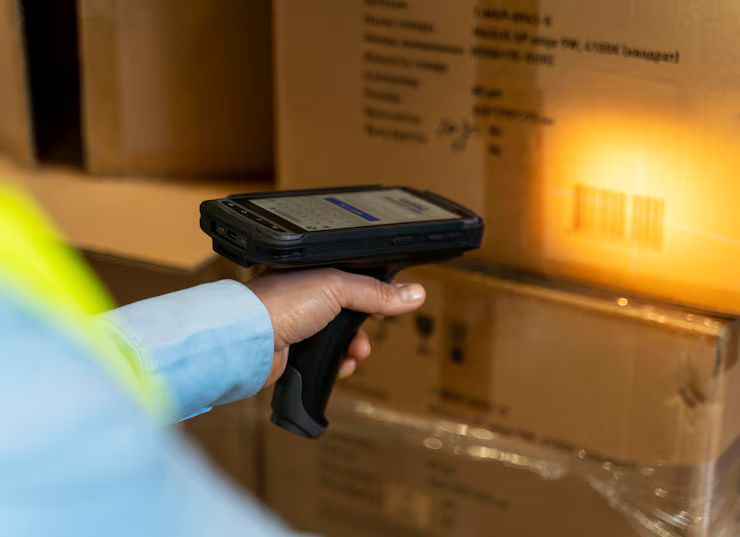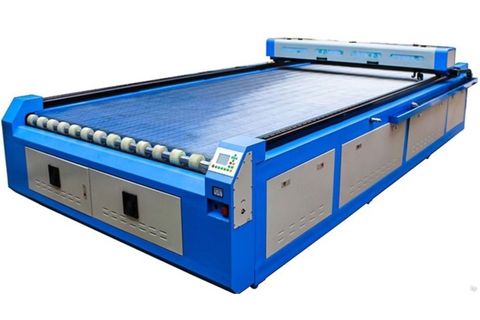Discover the Complete Guide to Barcode Inventory Systems
A barcode inventory system is a method used to track, record, and manage stock using barcodes and scanning devices. Every product or asset is assigned a unique barcode, which stores essential information such as product codes, batch numbers, and quantities. When scanned, the system updates inventory records in real time, helping businesses maintain accurate stock data.
Barcode inventory systems exist because traditional manual tracking methods often lead to human errors, delays, and inconsistencies. As businesses grow and supply chains expand, the need for a faster, more reliable, and automated method of tracking products becomes essential. Over time, barcode technology has evolved from simple one-dimensional codes to advanced QR and 2D data matrices that store more information in smaller formats.

Today, barcode systems are used across warehouses, retail stores, manufacturing units, healthcare facilities, logistics companies, and even small online businesses.
Importance – Why Barcode Systems Matter Today
Barcode inventory systems are important because they address modern challenges in stock control, supply chain speed, and operational accuracy. They have become a standard tool for businesses of all sizes due to the following reasons:
Enhances accuracy
Manual data entry often results in mistakes. Barcode scanning significantly reduces errors, ensuring that stock records stay precise.
Improves operational efficiency
Scanning a product takes seconds and automatically updates inventory levels. This speeds up processes such as:
-
Receiving shipments
-
Stock counting
-
Order fulfillment
-
Dispatching goods
-
Identifying product details
Supports business scalability
Growing businesses require systems that can handle larger inventory volumes. Barcode systems allow companies to expand without losing control over stock data.
Helps reduce costs
Accurate tracking helps prevent:
-
Overstocking
-
Stockouts
-
Inventory losses
-
Misplaced items
This enables better decision-making and minimizes financial wastage.
Improves customer service
In retail and e-commerce, customers expect fast and accurate order fulfillment. Efficient barcode systems help ensure the right products are picked, packed, and shipped.
Overall, barcode inventory systems solve problems related to time, accuracy, staffing, manual workload, and operational tracking, making them essential for modern supply chain management.
Recent Updates – Trends & Developments in Barcode Technology
The past year has seen several notable trends and updates in barcode inventory systems. Some of the key developments include:
Increased adoption of 2D barcodes
While 1D barcodes are still common, businesses are increasingly shifting to QR codes and Data Matrix codes because they store more information and offer better readability in low-quality printing.
-
The GS1 organization announced expanding support for 2D barcodes through 2024–2025, especially in retail and pharma.
Integration with cloud-based inventory software
Cloud systems are becoming popular due to features such as:
-
Real-time updates across multiple locations
-
Mobile access
-
Automated reporting
-
Integration with ERP and accounting tools
By late 2024, many small and medium businesses adopted cloud barcode inventory systems to streamline operations.
AI-driven inventory analytics
AI tools embedded in inventory systems now analyze scanning patterns and stock movement to suggest reorder points, detect anomalies, and forecast demand.
Mobile scanning apps
Modern smartphones can now function as barcode scanners. From 2023–2024, apps like Sortly, Zoho Inventory, and Shopify’s built-in tools gained popularity, reducing the need for dedicated hardware.
Improved durability of barcode labels
Industries such as manufacturing and logistics adopted stronger, heat-resistant, and chemical-resistant barcode labels. These updates support long-term tracking in harsh environments.
Laws or Policies – Regulations Affecting Barcode Systems
Barcode inventory systems operate within several guidelines and standards, depending on the country and industry. Some key areas influenced by laws or policies include:
GS1 Global Standards
GS1 is the international authority overseeing barcode formats such as UPC, EAN, and Data Matrix codes. Businesses must follow GS1 standards to ensure that barcodes are universally scannable.
Retail and packaging regulations
Many countries require retail and FMCG products to use standardized barcodes on packaging to improve consumer transparency and product identification.
Pharma and medical regulations
Healthcare organizations are required to follow:
-
UDI (Unique Device Identification) for medical devices
-
Barcode medication administration guidelines
-
Track-and-trace regulations for pharmaceuticals
Logistics and export policies
Shipping and customs authorities often require:
-
HS codes
-
Tracking barcodes
-
Product codes aligned with international standards
Food safety and traceability laws
Food industries in many countries follow traceability rules where barcodes play a major role in tracking production batches and expiry dates.
While barcode systems themselves are not heavily regulated, the industries that rely on them operate within specific compliance frameworks that influence the choice and format of barcode systems.
Tools and Resources – Helpful Solutions for Inventory Management
Several tools, apps, and platforms are available to help businesses implement or manage barcode inventory systems. Below are some widely used categories and examples:
Inventory Software with Barcode Support
-
Zoho Inventory – Cloud-based inventory tracking with barcode generation.
-
Sortly – Simple mobile app for small businesses.
-
Odoo Inventory – Integrated open-source ERP.
-
Fishbowl Inventory – Popular for manufacturing and warehousing.
-
NetSuite WMS – Enterprise-level solution with barcode automation.
Barcode Generator Tools
-
GS1 Barcode Generator
-
OnlineBarcodeGenerator.net
-
BarcodeTec
Mobile Barcode Scanner Apps
-
Scan to Spreadsheet (Android/iOS)
-
Shopify POS Scanner
-
Wasp Barcode App
-
CamScanner QR Reader
Barcode Hardware
-
Handheld barcode scanners
-
Bluetooth barcode readers
-
Industrial fixed scanners
-
Barcode label printers
Helpful Websites & Learning Resources
-
GS1 official website
-
Inventory management templates on Microsoft Excel
-
Supply chain learning platforms
-
Warehouse management blogs and tutorials
FAQs – Frequently Asked Questions
1. What is a barcode inventory system?
A barcode inventory system is a method of using barcodes and scanners to track and manage stock. It automatically updates inventory data when items are scanned, improving accuracy and efficiency.
2. Do I need special equipment to use barcode systems?
You can use dedicated barcode scanners, but many businesses now use smartphones with scanner apps. Label printers and inventory software are also helpful for complete implementation.
3. Are barcode systems suitable for small businesses?
Yes. Barcode inventory systems are widely used by small shops, online sellers, and home-based businesses because they reduce manual work and improve stock accuracy.
4. How do barcode systems improve accuracy?
Scanning eliminates manual data entry, reducing the risk of typing mistakes or miscounts. The system updates stock levels instantly, helping maintain accurate records.
5. What types of barcodes are used in inventory management?
Common types include:
-
UPC
-
EAN
-
QR codes
-
Code 128
-
Data Matrix
Each type has a different use based on capacity and industry.
Final Thoughts
Barcode inventory systems have become an essential tool for businesses aiming to improve accuracy, reduce manual work, and streamline stock management. Whether used in retail, manufacturing, logistics, or healthcare, barcode systems offer a structured and reliable way to track inventory. With the rise of cloud software, mobile scanning apps, and AI-driven analytics, these systems are becoming more accessible and efficient. Understanding the basics, industry standards, and available tools can help businesses choose the right solution for their needs and maintain better control over their operations.







